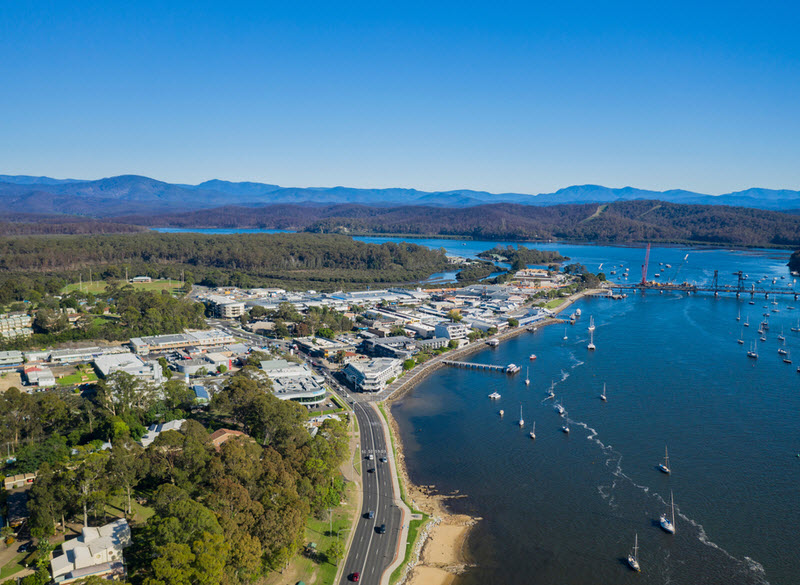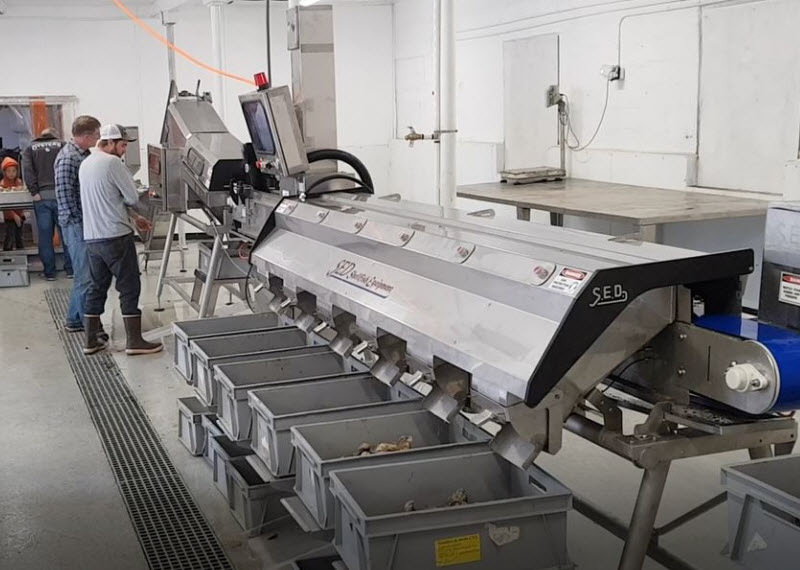
Ewan McAsh from McAsh oysters, Jamie Buchan and Jase Finlay are heavily invested in the Australian oyster industry. Ewan is a marine biologist with a reputation for bringing the industry into the 21st century, applying technology, engineering and science to farm management. He’s been in the industry for almost two decades.
Ewan has cultivated formidable family relationships with Jamie Buchan, a marine scientist, and Jase Finlay, a sports scientist, teacher, aqua advocate and very clever and dynamic manager. Together the team has created OysterLife, a sustainable share farming operation that is rapidly upscaling production aimed at producing 200,000 dozen premium and export-grade oysters in 2025.
OysterLife currently has 30 aquaculture leases under management on the Clyde River in Southern New South Wales. The team manages several species; however, the Sydney Rock Oyster and the Pacific Oyster are the primary market species. With large wholesale customers, efficiencies, quality and speed are the pillars on which the lads model their business.

The vision grader is an essential tool to reach our goals
“A few years ago we sat down together and set some lofty goals on what we wanted to achieve over the short to medium-term. A priority was to use the share farm model and provide opportunities for people to invest in the industry. Through the use of technology and automation, we set out to champion the oyster industry, protect the environment and build a thriving oyster growing community,” says Jamie.
An essential part of the organisation’s system is the SED vision grader. Operating on the farm for nearly a decade, the vision grader has allowed the team to create efficiencies in the grading and bagging process, freeing up labour capital expense and time. With a capacity to sort and bag 15,000 saleable size oysters per hour, with minimal labour, the vision grader is a critical piece of the puzzle that enables the team to work toward their goals.
“Over the past three to four years we’ve identified bottlenecks in our production. A major issue is grading two species of oysters simultaneously. The vision grader has proven to be highly efficient and successful for us, and as our farming operations continue to expand we see the need to introduce another vision grader to give us the capability to grade the two primary species simultaneously to meet our wholesale orders,” Jamie adds.

Grading on size, rather than weight
An additional major advantage the SED vision grader has over its competitors is grading by size, rather than weight. Weight configured graders have a large tolerance margin, which can create losses in sale value.
In the past, smaller farm operations have absorbed this large loss ratio. However, as farms become more professionally focused and efficiencies across all aspects of systems are carefully monitored, losses must be reduced to minimal levels to maintain margins.
“We are aware of a few farms in our area that use weight configured grading machines. Whilst this system is suitable for individual operations, for us they are simply not sustainable. We look at all aspects of our farming operations, employing technology such as SmartOysters digital technology. Due to our market being driven by size rather than weight it makes total sense to us to invest in grading technology that grades by size. Our loss of saleable-sized oysters is greatly reduced and the consistency of the oyster to the marketplace is much improved. This gives our customers an elevated level of confidence in the consistency of our product and our farms remain profitable and efficient,” says Jamie.
“We are currently looking at investing in a second vision grading machine. As the farm has tripled in size over the last three and a half years, and we continue toward our growth goals, it is a matter of necessity for us to continue to use automation equipment that is reliable and highly efficient,” Jamie concludes.
The SED Grader vision grader has been successfully supporting farms such as OysterLife for over two decades. We continue to innovate with an added cold shock overcatch treatment bath that is fully integrated into the vision grader production line.
Whether your farm is located in Australia or overseas, contact us directly and we can discuss and advise you on the most appropriate automation engineering solution for your operation.

SED Graders Australian and family owned
SED Graders is an Australian and family owned company creating automation technologies that are greatly improving the efficiency and profitability of oyster farms in Australia and around the world.
Contact us for any questions you may have and when you are considering a SED Graders vision grading machine or upgrading your current machine with an overcatch treatment bath.
